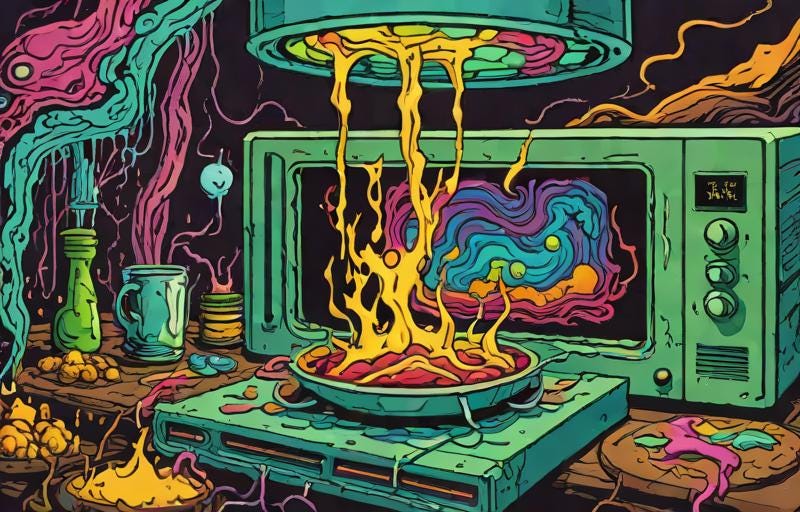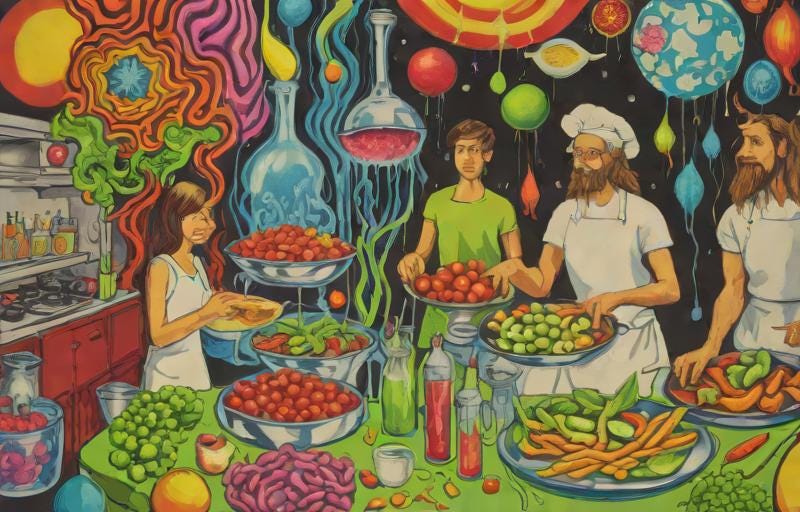Separating Fact from Fiction in the Kitchen Part III: Hacking away at a few more Culinary Myths
Today we are out to destroy some of the most ruthless culinary myths.
This is round three of a little game I like to play called Kitchen Fact or Fiction. Once again we will be putting to sleep a few culinary myths that have become detrimental to the success of the casual home cook.
In the past, we examined outlandish and outdated kitchen myths, such as rinsing your meat before cooking, adding oil to pasta water, and the well-known steak cooking myth of only flipping your meat once.
These myths are complete hogwash as are the culinary myths we will be dispelling here today. Here we go!
Myth #1: Microwaves Kill Food
I am sure that you could “kill” just about anything by cooking the shit out of it with whatever implementation you choose but does the use of a microwave to heat leftover or frozen food do any harm? In my opinion, the frozen food you’re eating probably contains more harmful chemicals than microwaves do.
According to healthline.com, microwaving may be one of the better ways to cook our food.
Some believe that cooking in a microwave irradiates or “Nukes” whatever was put in there, but this is absolutely not true. If we were being exposed to radiation every time we used a microwave you would see massive lawsuits and giant warnings on every microwave everywhere, similar to cigarettes, which kill a ton of people every year. But there is no evidence to suggest that microwave ovens are harmful to us.
Microwaves use electromagnetic waves similar to a TV or radio. The waves excite water molecules, which cause friction and then heat… It’s not at all like being exposed to nuclear fallout, not even close. Microwaves use a safe type of non-ionizing radiation, which means they are safe to use and to heat food without worrying about radiation. It’s pure science, microwaves are safe. Myth killed!
Myth #2: A Watched Pot Never Boils
This isn’t so much of a cooking myth that you would believe as an adult but when I was a kid and my grandma told me this, you bet I believed it.
This is a fun thing to tell kids so they don’t just sit there and watch the pot while it boils, it teaches them to multi-task, an essential skill to have in the kitchen.
Watching the pot boil gives the impression to a young mind that time is going very slowly and this bores them, so if you tell them it will never boil if it is being watched then you can re-direct them to do something else until that water boils.
Yes, a watched pot will eventually boil, it will just seem like it took forever if you don’t distract yourself. This is also useful in other areas of life. Keep your mind occupied when doing a boring task and that task won’t seem so bad, it’s the little things. Either way, a watched pot will boil. Myth killed!
Myth #3: Cooking is Art and Baking is Science
A lot of baking or pastry work indeed relies on precise measurements of the exact ingredients needed to elicit a specific chemical reaction to achieve the desired product.
The first dish that comes to mind that requires such a precise effort not only in the measurement of ingredients but in adherence to a specific methodology is the souffle.
When making a souffle, the ingredients have to be sifted, whipped, folded in, and then cooked in a specific order or you will not have a delicious souffle, you will have a pile of cooked ingredients that could have been a souffle but now aren’t.
In both cooking and baking chemical reactions take place to achieve a certain result so yes, science does happen across the board in the culinary world in both disciplines.
Personally, I would say that both have their artistic elements, chefs today create beautiful plates of food that have been cooked by advanced culinary science, and at the same time pastry chefs decorate beautiful cakes or sugar sculptures that have been cooked using traditional methods.
At the end of the day, any art encompasses some science and that is no different in the culinary world. Myth Killed!
Myth #4 Pork needs to be Well Done
Having cooked in a retirement setting for a few years in the past this is one myth that is rooted in fact and is still very much alive and well.
Yes, in the past pork did require an internal temperature of 160 F or well done to be considered safe to eat due to a parasite called Trichanella spiralis, however, better sanitation practices have led to a decrease in cases of trichinosis in human beings.
As of 2011, the USDA changed its recommendations to say that pork should be cooked to an internal temperature of 145 F. This is a decrease from the previous recommendation of 160 F.
Even though science has proven that we don’t have to cook pork until it’s bone-dry, some old-school people want their pork cooked beyond the 145F recommendation until it’s dried out and completely done leaving zero moisture left in the animal.
If you love pork cook that pig however long you want to but just remember it doesn’t need to be tough and dry. Does pork need to be cooked well done, No. Myth Killed!








Nice! I think the pork specs were still 160 when I was kitchen-ing ("retired" by 2005, but scaled back seriously by 2003). I enjoyed these.